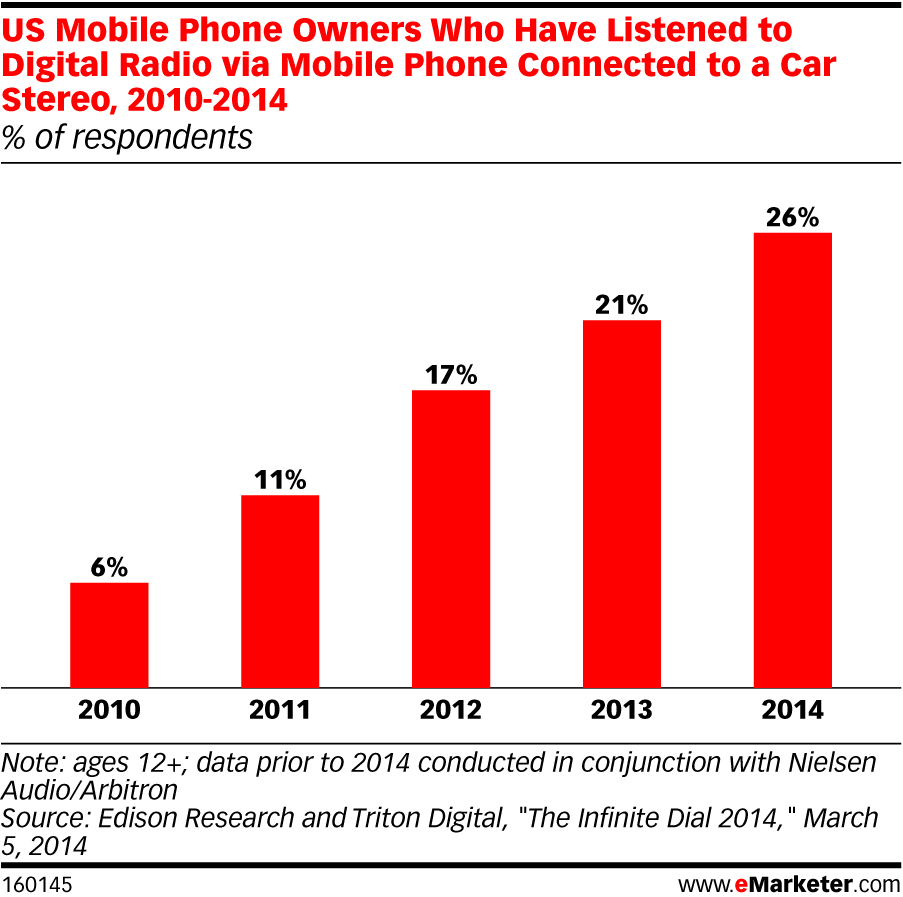Earlier this week, Clear Channel, the media company that owns most of America’s big broadcast radio stations, changed its name to iHeartMedia, after its fast-growing digital-radio platform iHeartRadio. This rebranding effort puts Internet-based radio front and center, which makes sense in today’s digital age, when digital newcomers like Pandora and Spotify are challenging radio’s relevancy.
The car is the last bastion of traditional broadcast radio because very few cars have access to the Internet. But that’s about to change, as more cars become connected to the Internet and more digital radio services become available. According to a recent study by Edison Research and Triton Digital, over a quarter of U.S. smartphone owners has streamed radio from their handsets in cars, a sharp increase from a mere 6% just 4 year ago.

In fact, the gradual shift towards Internet-based radio is so evident that even Sirius, the biggest subscription-based satellite radio operator, is reportedly eyeing the move to digital radio. Right now, Sirius heavily relies on their partnership with automakers to get their satellite-radio receivers installed in the cars. But that will have to change if it wishes to compete with the likes of Pandora, which can be easily accessed from mobile devices.
That being said, broadcast FM.AM car radio will probably hang around a bit longer, because it’s free, easy to use, and benefits from a strong broadcast signal. As Internet connectivity in the car improves, however, the trend towards digital radio dominance is basically inevitable.
